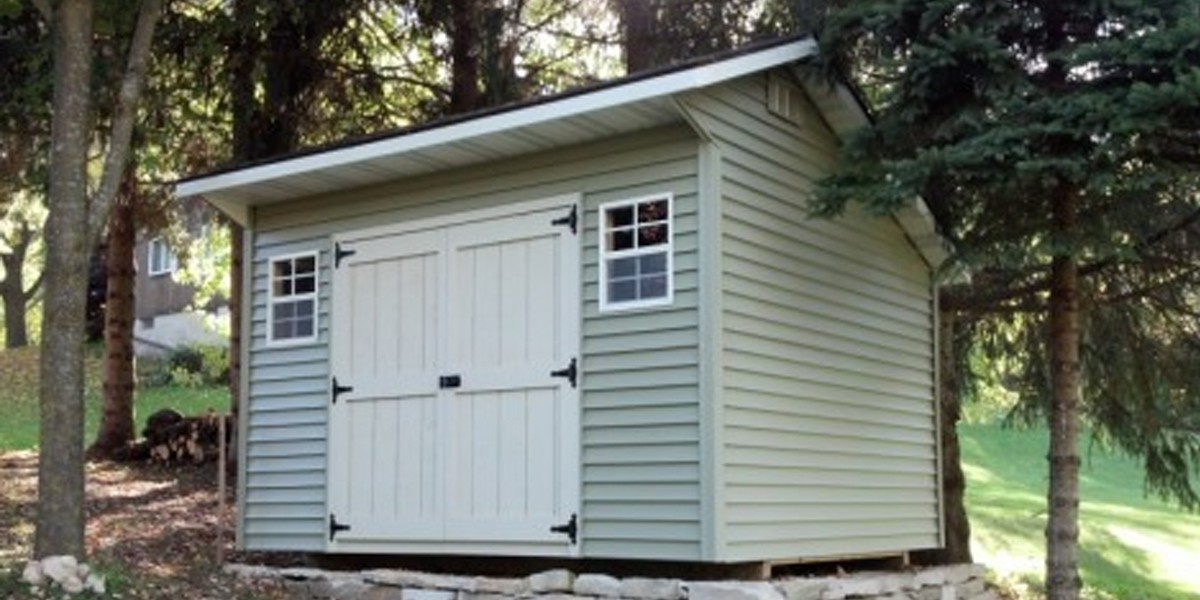Owning a steel siding shed is a great way to add storage, organization, and even curb appeal to your property. But like any structure, these sheds come with their own set of challenges. Many owners make mistakes that can shorten their shed’s lifespan, create extra maintenance, or reduce its overall effectiveness.
Let’s dive into the most common errors and how you can avoid them, so your steel siding shed remains a reliable and stylish addition to your home.
1. Choosing the Wrong Location
One of the first mistakes shed owners make is not carefully selecting the placement of their steel siding shed in Wisconsin. It might seem simple to place it wherever there’s an empty patch of yard, but this can lead to long-term headaches.
Why location matters:
- Poor drainage can lead to rusting and water damage.
- Too much shade can encourage moss or mildew growth on the siding.
- Proximity to trees can cause falling branches to dent or scratch your shed.
Tip to avoid this mistake: Always pick a level area with good drainage. If possible, add a gravel base or concrete pad to keep the shed off the damp ground.
2. Skipping a Proper Foundation
Many shed owners underestimate the importance of a strong foundation. A steel siding shed is heavy, and uneven support can cause structural problems over time.
Common foundation issues:
- Sagging floors due to soft soil.
- Doors that don’t close properly because the frame has shifted.
- Increased risk of corrosion from moisture trapped underneath.
Solution: Use a concrete slab or professionally installed shed pads. Even treated timber foundations can work if installed correctly. A solid base ensures your shed lasts for decades.
3. Ignoring Maintenance
Steel siding sheds are often praised for their durability, but that doesn’t mean they are maintenance-free. Neglecting simple upkeep can lead to expensive repairs.
Maintenance mistakes to watch out for:
- Not cleaning the exterior regularly to remove dirt, leaves, or debris.
- Failing to inspect for scratches or dents that expose bare metal.
- Ignoring roof and gutter issues that lead to water pooling.
Pro tip: Check your shed at least twice a year. Touch up paint where needed, clean the gutters, and make minor repairs before they become major problems.
4. Overloading the Shed
A steel siding shed might look sturdy, but overloading it can cause serious damage. Many owners store too many heavy tools, machinery, or even vehicles without considering weight limits.
Risks of overloading:
- Floor panels bending or warping.
- Structural stress on walls and doors.
- Safety hazards if shelving collapses.
How to avoid it: Distribute weight evenly, use proper shelving, and check manufacturer guidelines for maximum load capacity. A well-organized shed is safer and lasts longer.
5. Using the Wrong Fasteners or Hardware
Installing a steel siding shed with the wrong screws, bolts, or hinges can compromise its stability. Some owners try to cut corners with cheaper or incompatible hardware.
Problems this can cause:
- Loose siding panels that let water and pests in.
- Doors that sag or jam easily.
- Corrosion if non-galvanized metals react with the shed panels.
Quick tip: Always use the recommended fasteners and hardware. If you’re unsure, consult your shed supplier or hire a professional for assembly.
6. Not Sealing Gaps and Openings
Even a small gap in your steel siding shed can lead to big problems. Gaps allow water, wind, and pests to get inside, potentially causing damage to both the shed and your stored items.
Why sealing matters:
- Keeps moisture out, reducing the risk of rust.
- Prevents rodents and insects from nesting.
- Improves insulation if you store temperature-sensitive items.
How to fix it: Apply silicone caulking or weatherstripping around windows, doors, and any panel joints. Check the shed annually for new gaps.
7. Neglecting Ventilation
Steel sheds are prone to condensation if not properly ventilated. Many owners focus on security but overlook airflow, which can damage tools, paint, or other stored items.
Consequences of poor ventilation:
- Mold or mildew growth.
- Rust forming on stored metal items.
- Unpleasant odors and humidity buildup.
Easy solution: Install vents near the roof and floor to allow air to circulate naturally. Solar-powered fans can also help in extreme conditions.
8. Overlooking Aesthetic and Functional Upgrades
Sometimes, owners focus only on function and forget that a shed is also part of their property’s exterior. Neglecting small upgrades can make your shed less usable or visually unappealing.
Simple upgrades to consider:
- Adding shelving, hooks, or bins for better organization.
- Installing windows or skylights for natural light.
- Painting or adding trim for a polished appearance.
Even small upgrades can improve usability and make your shed the kind of “best exterior shed in Wisconsin” people notice.
9. Choosing the Wrong Shed Size
Picking a shed that’s too small or too large can be a costly mistake. Many owners underestimate their storage needs or overestimate the space they can maintain.
Tips for selecting the right size:
- Make a detailed list of items you plan to store.
- Consider future needs, not just today’s.
- Factor in walking and working space inside the shed.
The right size ensures convenience, prevents clutter, and protects your items better.
10. Ignoring Local Codes and Permits
Finally, some shed owners skip researching local building codes or obtaining permits. This mistake can lead to fines or even being asked to remove your shed.
Why it’s important:
- Compliance ensures your shed is legal and safe.
- Avoids conflicts with neighbors.
- Protects your investment from unnecessary legal troubles.
Advice: Check with local authorities before installation and follow all rules for placement, size, and materials.
Outcome:
A steel siding shed is more than just storage; it’s a long-term investment in your property’s efficiency and style. At MW Sheds, we don’t just sell sheds—we help create spaces that stand the test of time, rain or shine. Whether you’re looking for a compact solution or the best exterior shed for all your storage needs, our team ensures every detail is tailored to your property.
Start transforming your backyard today and experience a shed that’s built to last. Connect with us now and make your shed dreams a reality.
FAQs
1. What is the best way to maintain a steel siding shed?
Regular cleaning, inspecting for dents or rust, sealing gaps, and checking the roof and gutters twice a year keeps your steel siding shed durable.
2. How do I choose the right location for my steel siding shed?
Pick a level area with good drainage, away from overhanging trees, and ensure sunlight and airflow to prevent moisture, moss, and structural damage.
3. Can overloading a steel siding shed cause permanent damage?
Yes, excessive weight can warp floors, stress walls, and damage doors. Distribute weight evenly and use proper shelving to protect your shed’s structure.
4. Why is proper ventilation important for steel siding sheds?
Without ventilation, condensation can form, causing rust, mold, and mildew. Proper airflow protects your tools, stored items, and the shed itself.
5. Do steel siding sheds require a special foundation?
A solid base like a concrete slab, gravel pad, or treated timber foundation prevents sagging, water damage, and structural shifts, extending your shed’s lifespan.

